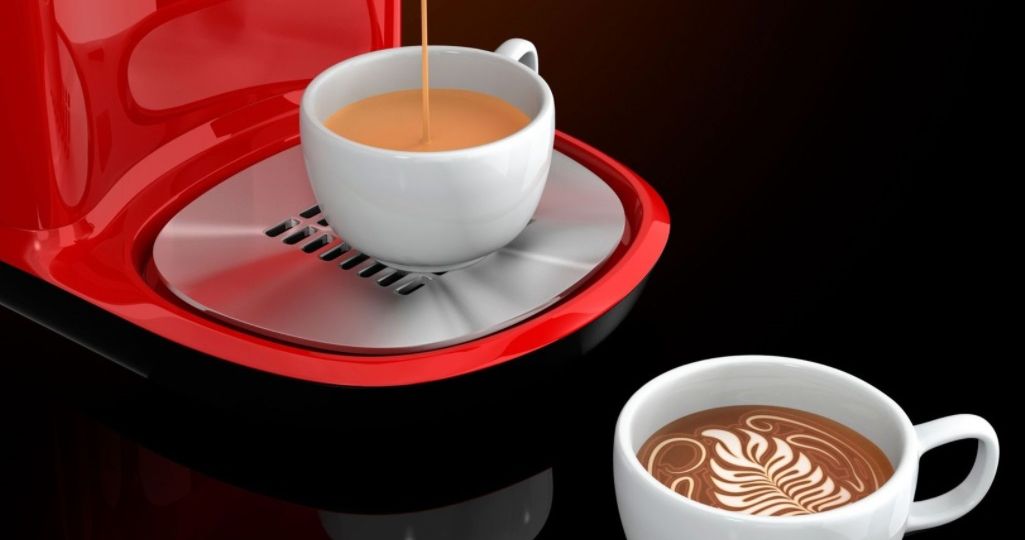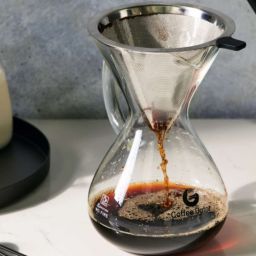
A latte with drip coffee is a creative twist on the traditional latte, which typically uses espresso. This version utilizes drip coffee, offering a practical and accessible option for coffee enthusiasts who may not have an espresso machine at home. This method has gained popularity for its simplicity and the unique flavor profile that drip coffee brings to the classic latte.
Key Takeaways
- Convenience: Using drip coffee for your latte is exceptionally convenient, especially if you already brew drip coffee regularly.
- Flavor Differences: Drip coffee tends to have a different flavor spectrum compared to espresso, which can alter the taste of your latte, often making it milder depending on the coffee’s strength.
- Technique Variations: The technique for making a latte with drip coffee is more forgiving and variable, allowing for personalization according to your taste preferences.
Making a Latte with Drip Coffee
To make a latte with drip coffee, you’ll need:
- Freshly brewed drip coffee
- Milk (dairy or non-dairy alternatives like almond, soy, or oat milk)
- Optional flavorings such as vanilla, caramel, or cinnamon
Step-by-Step Brewing Guide
- Brew Your Drip Coffee: Start with a strong brew to mimic the robust flavor of espresso typically used in lattes.
- Heat and Froth the Milk: While your coffee is brewing, heat the milk in a saucepan or microwave until just warm. Then, froth the milk using a milk frother or by shaking it in a jar and then microwaving it briefly to stabilize the foam.
- Combine and Serve: Pour the brewed coffee into a large mug, followed by the frothed milk. Spoon any extra foam on top. For a touch of sweetness or flavor, add a syrup or sprinkle of spice before enjoying.
Comparing Espresso and Drip Coffee
Espresso and drip coffee are two popular brewing methods that cater to different tastes and preferences. Espresso is known for its concentrated and robust flavor, typically made with a fine grind and brewed under high pressure to extract rich flavors and a creamy consistency. Drip coffee, on the other hand, is brewed by slowly pouring hot water over medium-ground beans, resulting in a lighter and usually more voluminous cup of coffee.
The key difference lies in the texture and intensity; espresso offers a bolder taste and thicker body, while drip coffee provides a smoother, milder experience.
The Role of Coffee Bean Types
The type of coffee bean used can significantly impact the flavor of your brew, whether it’s espresso or drip. Arabica beans are commonly used for their sweeter, more complex flavors, which include notes of fruit and sugar, with higher acidity. Robusta beans, however, have a stronger, harsher taste, with a grainier mouthfeel and higher caffeine content.
Choosing the right bean type can enhance your coffee experience, depending on whether you prefer a smoother, more flavorful cup or a powerful caffeine kick.
Recommended Coffee Makers
For those looking to make latte with drip coffee, a good quality drip coffee maker is essential. Look for models that offer variable strength settings and temperature control to fine-tune your brewing process. Some drip coffee makers also come with built-in grinders, which can enhance the freshness of your coffee by grinding the beans just before brewing.
Frothing Techniques Without a Machine
If you don’t have a frother at home, you can still enjoy a frothy latte by using a few simple tools. One effective method is to use a jar. Fill a jar with a third of milk, seal the lid tightly, and shake vigorously until the milk has doubled in volume. Then, microwave the milk for a few seconds to stabilize the foam.
Alternatively, a whisk or a French press can also be used to froth the milk. Heat the milk slightly, and then whisk vigorously or pump the French press plunger until the milk is frothy.
Flavor Additions and Variations
Enhancing your latte with flavors can turn a simple drink into a delightful treat. Common additions include vanilla, caramel, or hazelnut syrup. For a spiced variation, try adding a dash of cinnamon or nutmeg directly into the brew or on top of the froth. Seasonal flavors like pumpkin spice in the fall or peppermint during the winter holidays can also add a festive touch.
Remember, the key is to start with a small amount of flavoring and adjust according to your taste to ensure it complements the coffee rather than overwhelming it.
Dietary Modifications (e.g., Using Non-Dairy Milk)
For those with dietary restrictions or preferences, substituting non-dairy milk is a simple modification. Oat milk is a favorite among non-dairy alternatives due to its creamy texture and slight sweetness, making it ideal for lattes. Almond, soy, and coconut milk are also popular choices, each bringing its unique flavor and consistency to the latte.
When using non-dairy milk, consider using barista editions if available, as these are often formulated to better mimic the frothing characteristics of dairy milk.
FAQs
How can I get the best flavor from my drip coffee latte?
Start with freshly ground coffee beans for a richer flavor. Choose a medium roast to balance the strength of the drip coffee with the creaminess of the milk.
What’s the best milk to use for a creamy latte?
Whole milk is recommended for the creamiest texture, but 2% can also produce good results. Non-dairy alternatives like oat milk or almond milk are great for vegan options.
How do I avoid a watery latte?
Ensure your drip coffee is brewed strong enough to hold up against the dilution of milk. Consider brewing with a slightly higher coffee-to-water ratio than usual.
Can I still make a latte if I don’t have a frother?
Yes, you can froth milk by shaking it in a jar and then microwaving it for a few seconds, or use a whisk or French press to manually froth the milk.
Final Thoughts
Making a latte with drip coffee is a delightful twist on the traditional espresso-based latte, offering both convenience and versatility in your coffee routine. This method allows you to enjoy the latte experience even without an espresso machine, using tools and ingredients you likely already have at home.
Whether you stick to classic flavors or experiment with seasonal variations and non-dairy milks, the key is to enjoy the process and tailor your drink to your tastes. So, take this as an invitation to experiment with different brewing techniques, milks, and flavors to create your perfect home-brewed latte.









